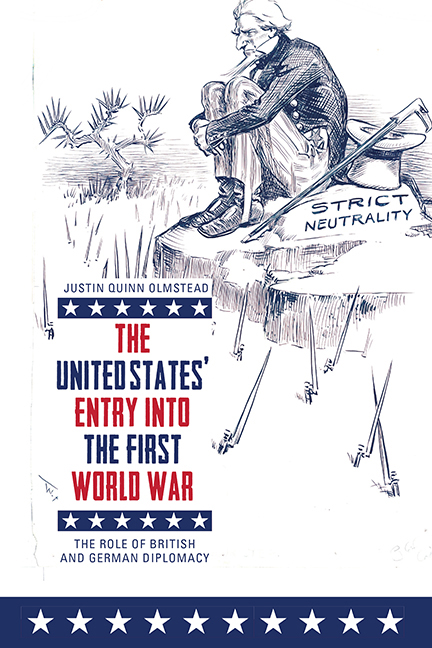Book contents
5 - Diplomatic Acquisition via Mexico
Published online by Cambridge University Press: 12 October 2019
Summary
Aside from the Zimmermann Telegram, Mexico is rarely viewed as having a role in First World War diplomacy. However, Mexican-American relations created an atmosphere of distrust and were therefore essential in creating an opening where German leaders believed they could use their diplomacy to influence the war's outcome. As discussed earlier, German diplomacy was based on the Bismarckian tradition of exploiting opponents’ weaknesses to gain the advantage. The diplomatic tensions between the United States and Mexico that developed just before Wilson took office provided the impetus behind the German decision to offer an alliance to Mexico.
The history of Mexican-American relations is long and violent. The secession of Texas in 1836 had left enough bad feelings between the two nations that they went to war in 1846. That Mexican-American conflict led to the United States gaining the present-day territories of New Mexico, Arizona, Nevada, California, and parts of Colorado – nearly one-third of Mexico's territory – as the spoils of war. Disorder along the US-Mexican border in the late 1870s and early 1880s led many American leaders to call for intervention, followed by more than twenty instances of American troops pursuing Mexican bandits into Mexican territory. US concerns over the stability of its southern neighbor eventually led it to assist in the overthrow of French-installed dictator Maximilian and the installation of the dictator Porfirio Díaz.
During the thirty years when Díaz led Mexico, relations between the two countries became comparatively good, thanks in large part to Díaz's policy of encouraging foreign investment to bring Mexico into the world economy. It was during this period that the United States was joined by the British, Germans, and other European nations in investing in Mexico, particularly in railroads and oil. When Francisco Madero overthrew Díaz in 1910, he continued his predecessor's policies of bringing in foreign investors, while attempting to end the disparity in wealth created by these same policies. Even though Madero attempted to undo the systems of injustice in Mexico, he was unable to quell the indignations of the Mexican people and was himself overthrown and eventually murdered in early 1913. The man who led this bloody coup was Madero's trusted General, Victoriano Huerta.
- Type
- Chapter
- Information
- The United States' Entry into the First World WarThe Role of British and German Diplomacy, pp. 131 - 154Publisher: Boydell & BrewerPrint publication year: 2018



